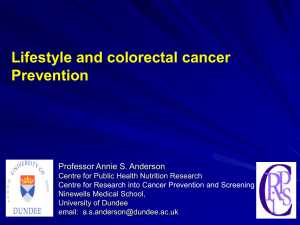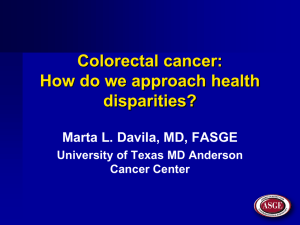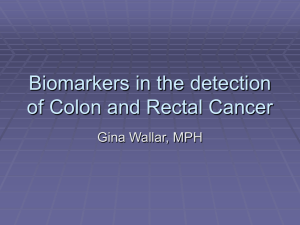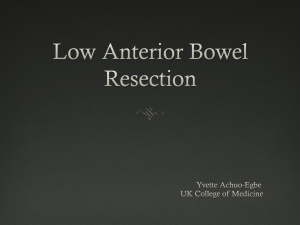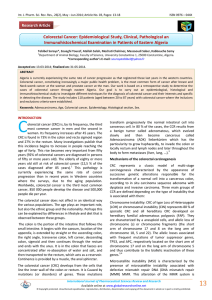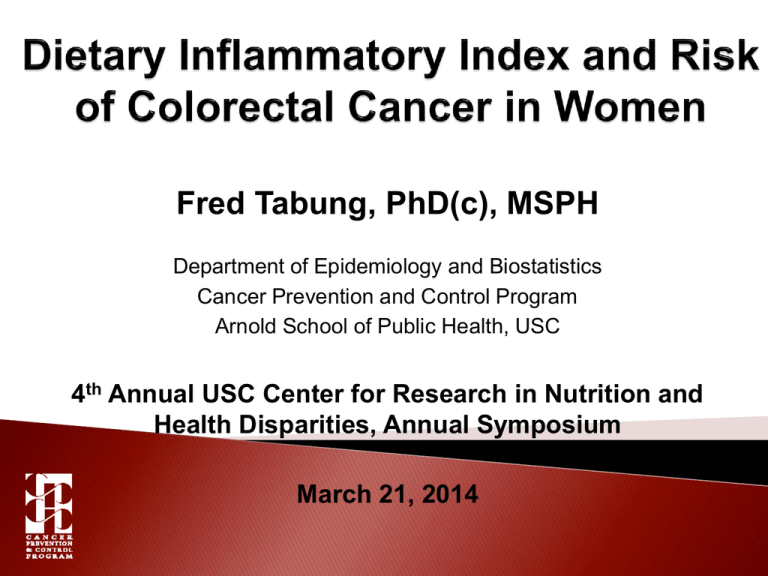
Fred Tabung, PhD(c), MSPH
Department of Epidemiology and Biostatistics
Cancer Prevention and Control Program
Arnold School of Public Health, USC
4th Annual USC Center for Research in Nutrition and
Health Disparities, Annual Symposium
March 21, 2014
Literature-derived population-based index to assess
the inflammatory potential of diet
Developed from published associations of 45 dietary
factors (macronutrients, micronutrients and foods)
and six inflammatory biomarkers
Assesses the inflammatory potential of an
individual’s diet on a continuum from maximally antiinflammatory to maximally pro-inflammatory
Validated using data on hsCRP and 24-hour dietary
recall interviews (24HR) and 7-day dietary recalls
(7DDR)
CANCER PREVENTION
& CONTROL PROGRAM
Shivappa N, Steck SE, Hurley TG, Hussey JR, Hebert JR.
Designing and Developing a Literature-derived, Populationbased Dietary Inflammatory Index. Public Health Nutr 2013;
S1368980013002115 [pii]; 10.1017/S1368980013002115
[doi]:1-8.
Shivappa N, Steck SE, Hurley TG, Hussey JR, Ma Y,
Ockene IS, Tabung FK, Hebert JR. A Population-based
Dietary Inflammatory Index Predicts Levels of C-Reactive
Protein in the Seasonal Variation of Blood Cholesterol Study
(SEASONS). Public Health Nutr 2013;
S1368980013002565 [pii]; 10.1017/S1368980013002565
[doi]:1-9.
CANCER PREVENTION
& CONTROL PROGRAM
Food group (medium
servings/day)
Fruits
Q1 (-7.055, <3.136)
(healthiest)
2.71
2.04
1.85
1.73
Q5 (1.953,
5.636) (least
healthy)
1.73
Q2 (-3.136, Q3 (-1.995, <<-1.995)
0.300)
Q4 (-0.300,
<1.953)
Vegetables
3.15
2.30
2.12
2.00
2.00
Combo Fruit/Veg
5.86
4.34
3.97
3.73
3.73
Fish
0.07
0.07
0.07
0.07
0.07
Red meat
0.63
0.73
0.74
0.76
0.76
Poultry
0.44
0.40
0.38
0.38
0.38
Soy
0.08
0.02
0.02
0.02
0.02
Nuts
0.26
0.20
0.18
0.17
0.17
Combo Nut/soy
0.34
0.22
0.20
0.18
0.18
Grains
5.89
4.69
4.55
4.47
4.47
Whole Grain
1.73
1.24
1.17
1.12
1.12
Milk
0.97
0.88
0.80
0.71
0.71
Dairy
2.30
2.06
1.92
1.76
1.76
CANCER PREVENTION
& CONTROL PROGRAM
Actual intake data in the WHI CT-OS
About 65,000 American women are projected to be
diagnosed with colorectal cancer (CRC) in 2014
3rd most commonly diagnosed cancer in women after
breast and lung cancers
Adherence to dietary patterns such as DASH, HEI and
Med diet, has been shown to be associated with
reduced CRC risk
Evidence of an influence of inflammation on CRC:
Patients with ulcerative colitis and Crohn's disease have an
increased risk of developing CRC
Reduced risk of colon cancer with use of aspirin or other NSAIDs
CANCER PREVENTION
& CONTROL PROGRAM
To utilize the DII to evaluate the association of
the inflammatory potential of diet with risk of
colorectal cancer in postmenopausal women
CANCER PREVENTION
& CONTROL PROGRAM
DII calculated from baseline FFQs (1993-1998)
Both OS and CT data used
Categorized into quintiles
Participants followed until incident colorectal cancer or
September 30, 2010
Colorectal cancer cases ascertained through a centralized
physician adjudication process (n=1,922)
CANCER PREVENTION
& CONTROL PROGRAM
Excluded from analysis:
◦ Women who reported previous CRC at baseline or missing
previous CRC status at baseline
◦ Women with implausible reported total energy intake values (≤600
kcal/d or ≥ 5000 kcal/d) or extreme body mass index (BMI) values
(≤15kg/m2or ≥ 50kg/m2)
Multiple covariate-adjusted Cox proportional hazards
(PH) regression models used to calculate hazard ratios
(HR) for:
◦ colorectal cancer
◦ colon cancer
proximal colon cancer
distal colon cancer
◦ rectal cancer
CANCER PREVENTION
& CONTROL PROGRAM
Lowest DII quintile (most anti-inflammatory diet) was the
referent for all models
Potential effect modification by waist-to-hip ratio, waist
circumference, BMI, and NSAID use, investigated by stratifying
on these covariates in the Cox PH models
Tests of linear trend adjusted for covariates, computed by
assigning the median value of each quintile to each participant
in the quintile
Sensitivity analyses- exclusion of CRC cases that occurred
within 3 years from baseline
Analyses by stage of CRC at diagnosis (localized, regional and
distant)
CANCER PREVENTION
& CONTROL PROGRAM
Total energy intake
Age
BMI
Race/ethnicity
Educational level
Physical activity
Family history of colorectal cancer
Diabetes
Hypertension
Arthritis
History of colonoscopy
History of occult blood tests
NSAID use
Category & duration of estrogen use
Category & duration of combined estrogen & progesterone use
DM arm, HRT arm, and CaD arm
CANCER PREVENTION
& CONTROL PROGRAM
Risk of colorectal cancer across quintiles of the DII
Q1 (-7.055, <3.136)
(healthiest)
Referent
Colorectal cancer
Colorectal cancer cases,
1922
Colon cancer
Colon cancer cases, 1560
Proximal colon
Proximal colon cancer
cases, 1034
CANCER PREVENTION
& CONTROL PROGRAM
HR (95%CI)
Q5 (1.953,
5.636) (least
healthy)
HR (95%CI)
Ptrend
1.00
0.98 (0.84, 1.14)
1.22 (1.05, 1.43)
0.02
365 (19.0%)
360 (18.7%)
435 (22.6%)
1.00
0.98 (0.83, 1.15)
1.23 (1.03, 1.47)
299 (19.2%)
289 (18.5%)
346 (22.2%)
1.00
0.98 (0.79, 1.20)
1.35 (1.09, 1.67)
193 (18.7%)
181 (17.5%)
229 (22.2%)
Q3 (-1.995, <0.300)
0.02
0.01
HRs were strengthened when CRC cases that developed
within 3 years from baseline were excluded,
◦ e.g. HR Q5vsQ1 for colon cancer: 1.36 (1.11, 1.66), Ptrend=0.003
HRs for CRC differed by category of NSAID use:
◦ Pinteraction=0.26
◦ Non-NSAID users: 1.31 (1.05, 1.65)Q5vsQ1, Ptrend=0.03
◦ NSAID users: 1.11 (0.89, 1.38) Q5vsQ1, Ptrend=0.61
No significant association with:
◦ Distal colon cancer
◦ Rectal cancer
◦ CRC stage at diagnosis
CANCER PREVENTION
& CONTROL PROGRAM
Study limited to postmenopausal women
FFQ measurement error
Diet assessment at only one time point
CANCER PREVENTION
& CONTROL PROGRAM
Consumption of pro-inflammatory diets increases
the risk of colorectal cancer in older women,
especially colon cancer located in the proximal
colon
Consumption of pro-inflammatory diets increases
the risk of colorectal cancer in older women not
regularly taking NSAIDs
CANCER PREVENTION
& CONTROL PROGRAM
Longitudinal Changes in Diet-related
Inflammation and Risk of Cancer in Women
An assessment of the inflammatory potential
of diet over time in the Women’s Health
Initiative
Changes in the DII over time and risk of
colorectal cancer in women
CANCER PREVENTION
& CONTROL PROGRAM
Chair:
Susan E. Steck
USC Dept. of EPID/BIOS and Cancer
Prevention and Control Program
Members:
Yunsheng Ma
Angela D. Liese
UMass Medical School
USC Dept. of EPID/BIOS and Center for
Nutrition & Health Disparities
Jiajia Zhang
USC Dept. of Epidemiology & Biostatistics
James R. Hebert USC Dept. of EPID/BIOS and Cancer
Prevention and Control Program
CANCER PREVENTION
& CONTROL PROGRAM
Lifang Hou
Northwestern Univ. Feinberg
School of Medicine
Bette Caan
Kaiser Permanente Division of
Research
Karen K. Johnson
Univ. of Tennessee Health
Science Center
Yasmin Mossavar-Rahmani Albert Einstein College of
Medicine
Jean Wactawski-Wende
SUNY Dept. of Social and
Preventive Medicine
Judith K. Ockene
UMass Medical School
Nitin Shivappa
USC Dept. of EPID/BIOS and
Cancer Prevention and Control
Program
CANCER PREVENTION
& CONTROL PROGRAM
Mr. Tabung was supported by an NIH F31 National Research Service
Predoctoral Award, a USC SPARC grant and a fellowship from the USC
Center for Colon Cancer Research
Drs. Steck and Zhang were supported by the Prevent Cancer Foundation Living in Pink grant
Dr. Hébert was supported by an Established Investigator Award in Cancer
Prevention and Control from the Cancer Training Branch of the National
Cancer Institute (K05 CA136975).
Funding for DII development was provided by the CPCP
The WHI program is funded by the National Heart, Lung, and Blood
Institute, National Institutes of Health, U.S. Department of Health and
Human Services through contracts HHSN268201100046C,
HHSN268201100001C, HHSN268201100002C, HHSN268201100003C,
HHSN268201100004C, and HHSN271201100004C.
CANCER PREVENTION
& CONTROL PROGRAM

